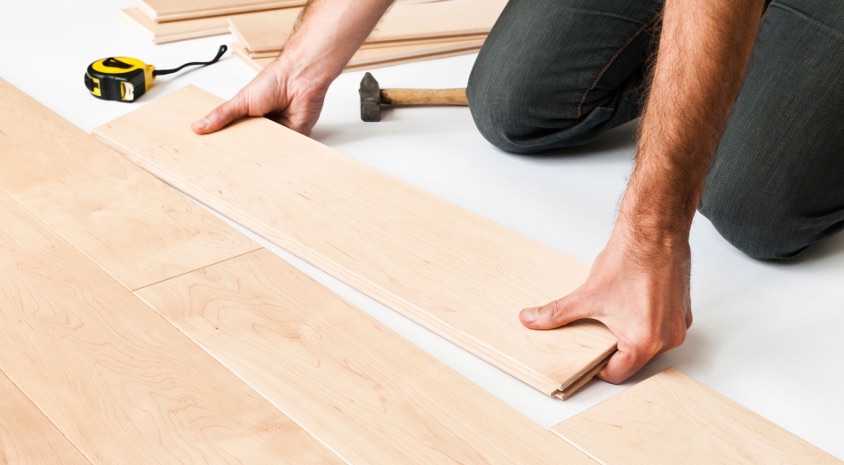Which Methods Are Used to Install a Solid Wood Floor?

Different types of methods are used to install a solid wood floor. These include nailing, stapling, and glue-down. It is important to understand which method will work for your project so that you can get the best results.
Nailing or stapling
A nail-down method is the most common way of installing solid wood floors. This involves pre-drilling a pilot hole to keep the nails at a 45-degree angle.
Stapling is a popular alternative. It has the added advantage of being a lot quicker than the nail-down method. However, stapling does require a staple gun.
The key to using this technique properly is to use the right fasteners. These will help minimize issues such as crackling, creaking, and warping. Make sure you use the right fasteners for your particular subfloor. If you aren’t sure what fasteners are best for your installation, check the NWFA Installation Guidelines.
Before beginning stapling, ensure your subfloor is dry. The moisture content of your subfloor will have a major impact on the finish of your floor. You also need to be aware of how much moisture your subfloor can handle. For instance, a subfloor that’s excessively dry will chip away at the subflooring material.
Glue-down
Glue down installation is the process of permanently bonding a solid wood floor to a substrate. In this method, a specialized trowel is used to spread a layer of adhesive between two or more planks of hardwood or engineered wood.
There are several advantages to installing a glue down floor over other types of flooring. First, it can be a good choice for rooms that see a lot of foot traffic. Second, it is more stable. Third, it can be installed in a variety of environments.
Before you install a hardwood or engineered wood floor, you should make sure that the subfloor is properly prepared. You need to consider the room’s moisture levels, the amount of noise, foot traffic, and the durability of the flooring.
Depending on your specific situation, you can choose to install a solid or engineered wood floor in one of three ways: with nails, staples, or glue. The choice depends on the material and type of floor you are installing, your skill level, and the project’s cost.
Trim and transitions
There are a number of different types of trim and transitions when installing solid wood floors. These include shoe molding, T-molding, end molding, and reducers. Each one has its own unique function, but all serve to make the transition from one flooring to another smooth.
For instance, a stairnose is a transition piece that provides a smooth transition from a stair tread to the floor. A quarter round is an arc that fits snugly over the expansion space between a baseboard and hardwood flooring.
The T-Mold is a metal piece that is used to join two hard surfaces of similar height. It can be secured with either a heavy duty construction adhesive or finish nails.
Another type of a similar type of transition strip is a T-Bar. This metal bar is used to connect two floors of similar height. You can also use a lightweight steel or aluminum strip.
A more sophisticated version of a T-Bar is a reducer. Reducers are designed to gradually reduce from a thicker flooring to a thinner surface.
Costs
Installing solid wood floors is not cheap, but it’s one of the most beautiful additions to a home. The cost depends on the type of material and the labor involved. Generally, installation costs $4 to $8 per square foot.
The material costs are most variable. A basic-grade 500-square-foot roll of underlayment costs $26. If you purchase hardwood flooring prefinished, you can save a lot of time on installation.
The next cost factor is labor. Labor is charged by the square foot and usually varies by the type of contractor. Some will charge you for the labor, while others will only add in the materials.
Aside from labor, other costs include removing existing flooring, padding and underlayment. Other miscellaneous expenses, such as the rental of a compressor and tools, can add up to hundreds of dollars.
Aside from the material cost, the installation price of solid hardwood flooring is affected by the width of the planks. Typically, planks range between two and three inches wide. This ensures that the floor is uniform in appearance in the space.





